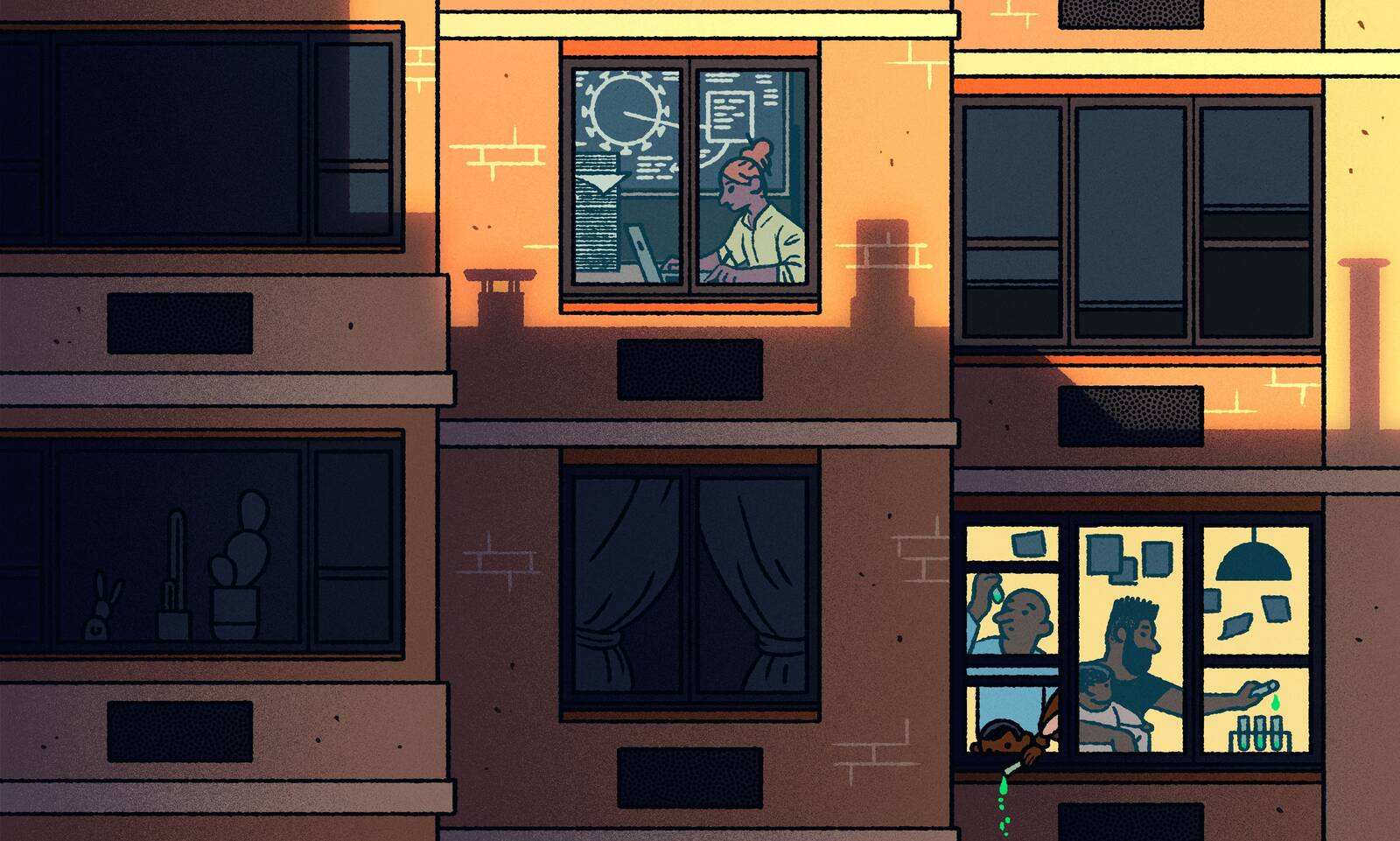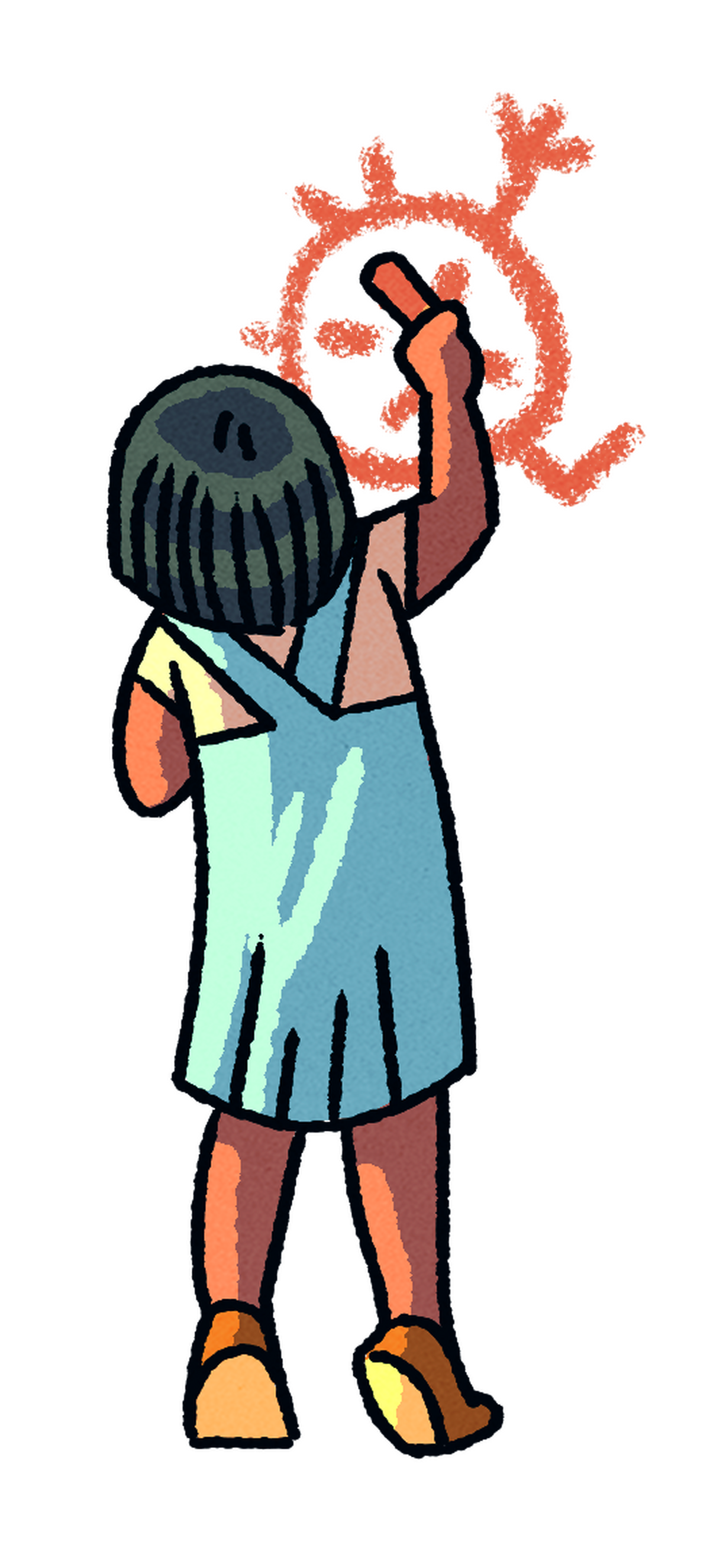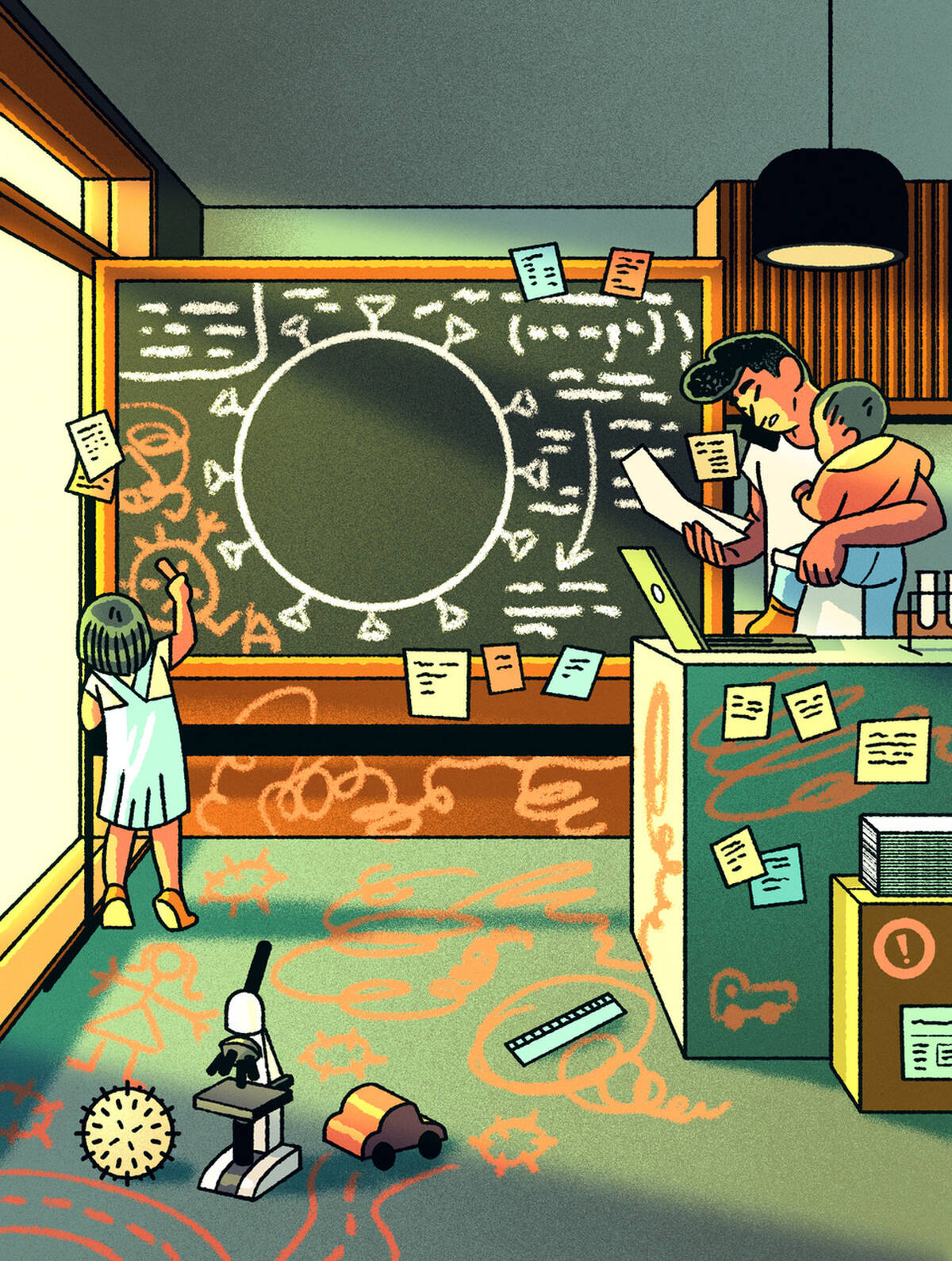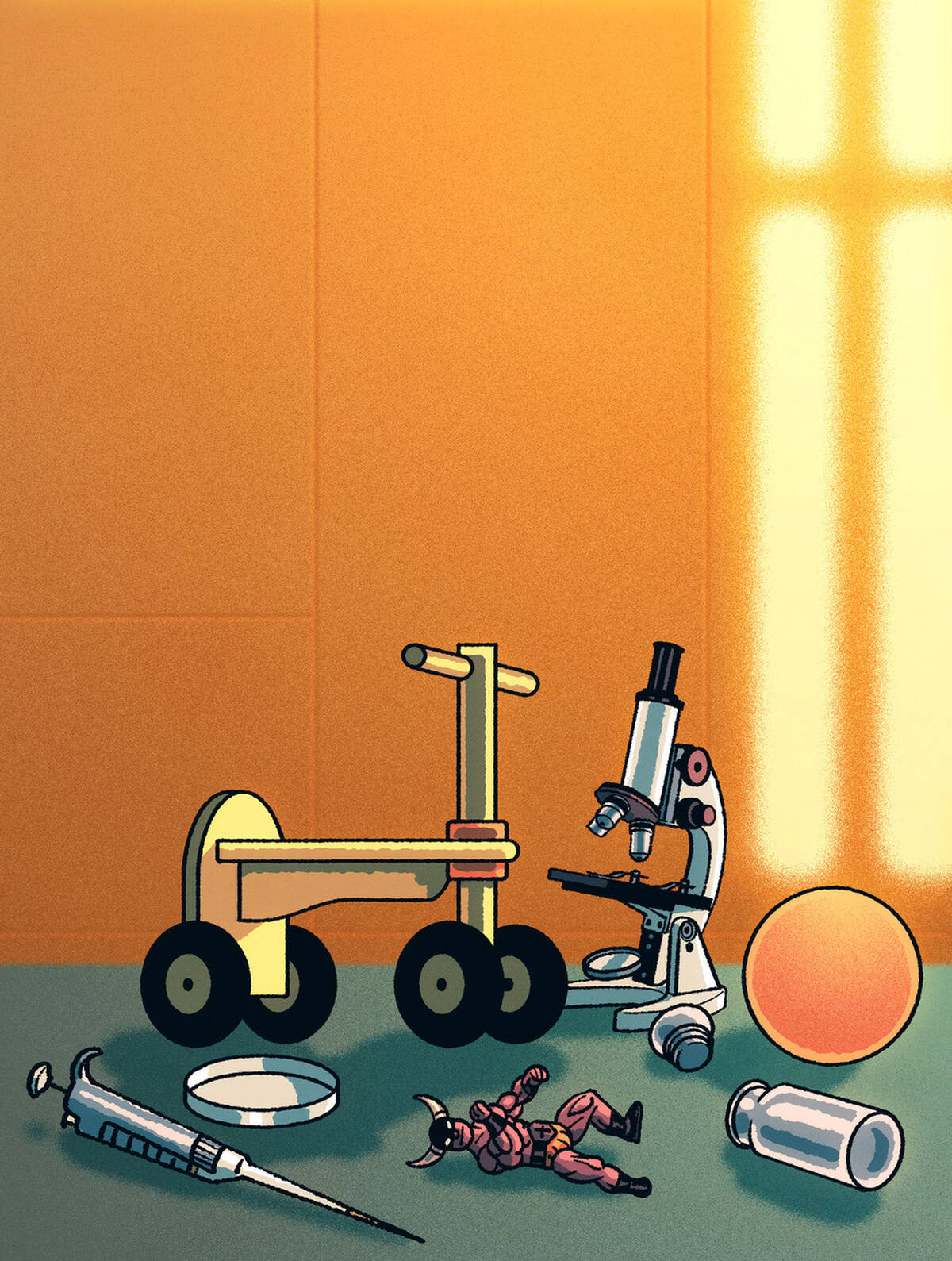How Has Covid-19 Shaped Scientists—and the Future of Science?

Michael Meier
In so many ways, the early days of the COVID-19 pandemic left us with more questions than answers. How did the virus spread? What activities were safe? When would life return to normal?
The questions were no less plentiful or urgent for the researchers who study the nature of scientific advances at Kellogg’s Center for Science of Science and Innovation. How has the pandemic affected science in both the short and long term? What role has science played in addressing the wide-ranging implications of this global crisis? And what lessons can we learn about the nature of scientific progress by studying how scientists adapted their research during the past year?
“It was quickly clear that we were in the biggest crisis of our generation, yet we knew so little about how the pandemic was impacting science and innovation,” explains CSSI Director Dashun Wang, who is an associate professor of management and organizations at Kellogg.
What was also abundantly clear was that the world was looking to science and innovation to save us, explains Benjamin Jones, a Kellogg strategy professor. The record speed at which scientists were attempting to develop vaccines—using technology that relied on decades of prior research—highlights, as Jones says, “that science is fundamental to human progress, which means that studying the science of science can generate extremely high social returns.”
So back in the spring of 2020, he and his colleagues got to work investigating the activities of their fellow scientists. Here’s a look at what they have since found.
Identifying COVID’s Unequal Impact
It became immediately clear that COVID-19 was going to change all our lives dramatically. But Wang specifically wanted to know how it was changing the work lives of scientists. What was happening to scientists’ work hours—and was that impact being felt equally?
He and nine fellow researchers, including Yian Yin, a PhD student at CSSI, sprang into action with a survey. By mid-April 2020, they had received roughly 4,500 responses from researchers in the U.S. and Europe.
The conclusion? The pandemic had slashed work hours for the majority of researchers, from an average of 61.4 hours per week to 54.4 hours.
The survey showed that the single biggest predictor of a decline in work hours across all scientific fields was whether or not a researcher was caring for young children. Survey respondents with dependents under five saw their research time drop by 16 percent more than that of comparable scientists in their field. These scientists were also disproportionately women.
The impact, regardless of gender, varied dramatically by field. Those who required laboratories, like biochemists and chemical engineers, suffered the steepest drop in hours, while those in the so-called “pen-and-paper” disciplines, like mathematics, reported the smallest declines. And, not surprisingly, researchers in COVID-related fields, like medical research, reported working more hours.
(Myers, Kyle R., Wei Yang Tham, Yian Yin, Nina Cohodes, Jerry G. Thursby, Marie C. Thursby, Peter Schiffer, Joseph T. Walsh, Karim R. Lakhani, and Dashun Wang. 2020. “Unequal Effects of the COVID-19 Pandemic on Scientists.” Nature Human Behaviour.)
Scientists Are Extraordinarily Adaptable—but at What Cost?
It’s no surprise that medical researchers focused intensely on COVID-19 last year. But so did many researchers in economics, education, and engineering. Indeed, scientists across virtually every field pivoted to COVID-19 research in 2020. But how far, exactly, were these researchers traveling from their previous work, and what impact did this far-afield work really have? Can scientists quickly adapting to a global crisis still produce the same-quality work?
To quantify this, Jones and Wang teamed up with other researchers, including CSSI postdoctoral researcher Ryan Hill, Yin, and MIT Ph.D. student Carolyn Stein. The researchers analyzed millions of current and previous papers. Among their findings:
- COVID research was generally a big pivot: In examining the 89,000 COVID-19 research papers produced in 2020, the researchers found that 67 percent of the scientists authoring these papers had no prior research that was relevant to COVID. Additionally, even scientists who had produced especially relevant prior work pivoted further when writing COVID-19 papers than they normally do.
- Age and productivity matter: Those most likely to pivot into COVID research last year were more advanced in their careers and were highly productive in their previous work.
- Grants tend to constrain pivots: Grants in 2020 tended to support low-pivot work, and COVID-19 papers were substantially less likely to cite a funding source at all levels of pivot, suggesting that in an emergency situation like a pandemic, funding systems lag behind scientific initiative.
- There is a significant “pivot penalty": Time will tell the full impact of this year’s COVID-related papers. But historically, the researchers found that when scientists reach too far to study new topics, the research suffers. In examining 36 million papers from 1970–2020, it became clear that the larger a scientist’s pivot, the lower the impact of that work, as measured in citations. This pivot penalty appears to be increasing over time. This quantifies a significant constraint that scientists face when they venture into new areas, even when it feels imperative to do so.
Taken together, these findings point to some systemic challenges scientists face when they need to adapt, especially when they need to adapt quickly. The authors suggest proactively working to build a bigger bench of scientists whose expertise is wide-ranging. This will help ensure that when the next crisis hits, there will be scientists ready who don’t need to pivot too far to contribute valuable research.
(Hill, Ryan, Yian Yin, Carolyn Stein, Dashun Wang, and Benjamin F. Jones. “Adaptability and the Pivot Penalty in Science.” Working paper.)
Policymakers Around the World Are Listening to Scientists
Scientists have been pumping out papers about COVID at a break-neck speed. But how well were policymakers—the people tasked with keeping the rest of us safe—integrating this cutting-edge research into their policies?
That’s the critical question that Wang, Jones, Yin, and CSSI postdoctoral research fellow Jian Gao tackled in a project that used COVID-19 as an opportunity to examine how well science and policy communicate. They also looked at how effectively policymakers differentiate well-supported scientific ideas from less-established ones.
They analyzed over 37,000 policy documents across 114 countries from January through late May 2020. This included publications from governments, think tanks, and intergovernmental organizations. They also scrutinized the scientific research cited in the policy documents.
Overall, the conclusions were positive. As COVID cases increased, so did the share of policy papers devoted to COVID. And the focus of policy shifted over time. As the pandemic evolved from strictly a health crisis to a socioeconomic one, policy documents shifted, too. For example, the share of economy-related documents rose starting in mid-March 2020 as governments began enacting shutdowns.
When the researchers looked at the quality of the papers that policymakers relied on, they also found good news. Policymakers generally relied on research that was extremely recent, as well as peer-reviewed and more highly cited than COVID research the policymakers did not reference. Despite public concerns that policymakers aren’t engaging with science, overall, the global picture is one of relatively tight integration between policy and novel scientific insights.
(Yin, Yian, Jian Gao, Benjamin F. Jones, and Dashun Wang. 2021. “Coevolution of Policy and Science during the Pandemic.” Science.)
The Pandemic’s Impact on Science May Be Enduring—and Detrimental
It’s too early to know the full scope of the long-term effects of the pandemic on science. But there is some evidence that scientific creativity has taken a blow.
Wang, Gao, and Yin, along with others, compared their survey from April 2020 with one they conducted in January 2021 and found a troubling result: there is a widespread and substantial loss of new ideas among researchers. This was seen across nearly all scientific fields. But, as their earlier work showed, once again the situation was worse for female scientists and those with young children, who reported particularly pronounced declines in new research ideas.
Scientists working on COVID-related research were largely immune to the phenomenon. But those in non-COVID-related fields were hit hard: they reported a 38 percent decline in new ideas compared with their pre-pandemic levels.
The survey data tracks with an analysis the team did of all research papers published in 2020. They found a global decline in both the rate at which scientists established new collaborative relationships and in the novelty of the research they produced.
The results are particularly troubling because they can be so easily masked by other short-term markers of scientific productivity. Indeed, journal submissions and publications do not appear to have dipped during the pandemic. But this may be because researchers have been revisiting old datasets or writing up existing research.
It takes time to turn new ideas into published research, so we may not know the full extent of the pandemic’s impact on science for many years. The authors suggest that both scientific funders and institutional leaders continue to track the effects of the pandemic on science long after the actual pandemic ends.
(Gao, Jian, Yian Yin, Kyle R. Myers, Karim R. Lakhani, and Dashun Wang. 2021. “Potentially Long-Lasting Effects of the Pandemic on Scientists.” Working paper.)
Continuing the Push for Innovation
How can we harness the U.S.’s considerable talent to continue to fight COVID-19?
Kellogg Strategy professor Ben Jones and a colleague lay out three steps the government can take to spur crucial innovations.
- Fund lots and lots of independent projects: Innovation policy doesn’t have to pinch pennies to be cost-effective. If governmental organizations like the NIH fund 10,000 research and development efforts, even if each has only a 0.1 percent chance of success, that still means there’s a 97 percent chance of discovering five solid advances.
- Think broadly about which research is relevant: Focusing exclusively on biomedicine to pull us out of a global pandemic is shortsighted. Other fields hold much promise. After all, this is not just a public-health crisis but a social and economic one as well.
- Streamline the funding process: Money needs to flow quicky to both public- and private-sector researchers. Government red tape and paperwork should be reduced and funds made available within a week of applying. Private-sector researchers should have access to forgivable loans for COVID-related work.
(Azoulay, Pierre, and Benjamin Jones. 2020. “Beat COVID-19 through Innovation.” Science.)
The Center for Science of Science and Innovation
Kellogg’s Center for Science of Science & Innovation (CSSI) is a multidisciplinary community for scholars in such fields as computational social science, network science, artificial intelligence, and complex systems. CSSI collaborators take scientific methods and turn them upon science itself to establish a systematic, quantitative framework that can make sense of mass quantities of data and identify emerging patterns.
To learn more about the science of science and innovation, check out the first book in the field: The Science of Science, coauthored by Dashun Wang.
Featured Faculty
Dashun Wang is an associate professor of management and organizations at Kellogg. He’s also an associate professor of industrial engineering and management sciences (by courtesy) and the director of the Center for Science of Science & Innovation.
Benjamin Jones is the Gordon and Llura Gund Family Professor of Entrepreneurship and a professor of strategy at Kellogg.
Emily Stone
Emily Stone
Jessica Love
Michael Meier
Dashun Wang
Benjamin F. Jones
Grip
University. All Rights Reserved. Privacy Policy.



